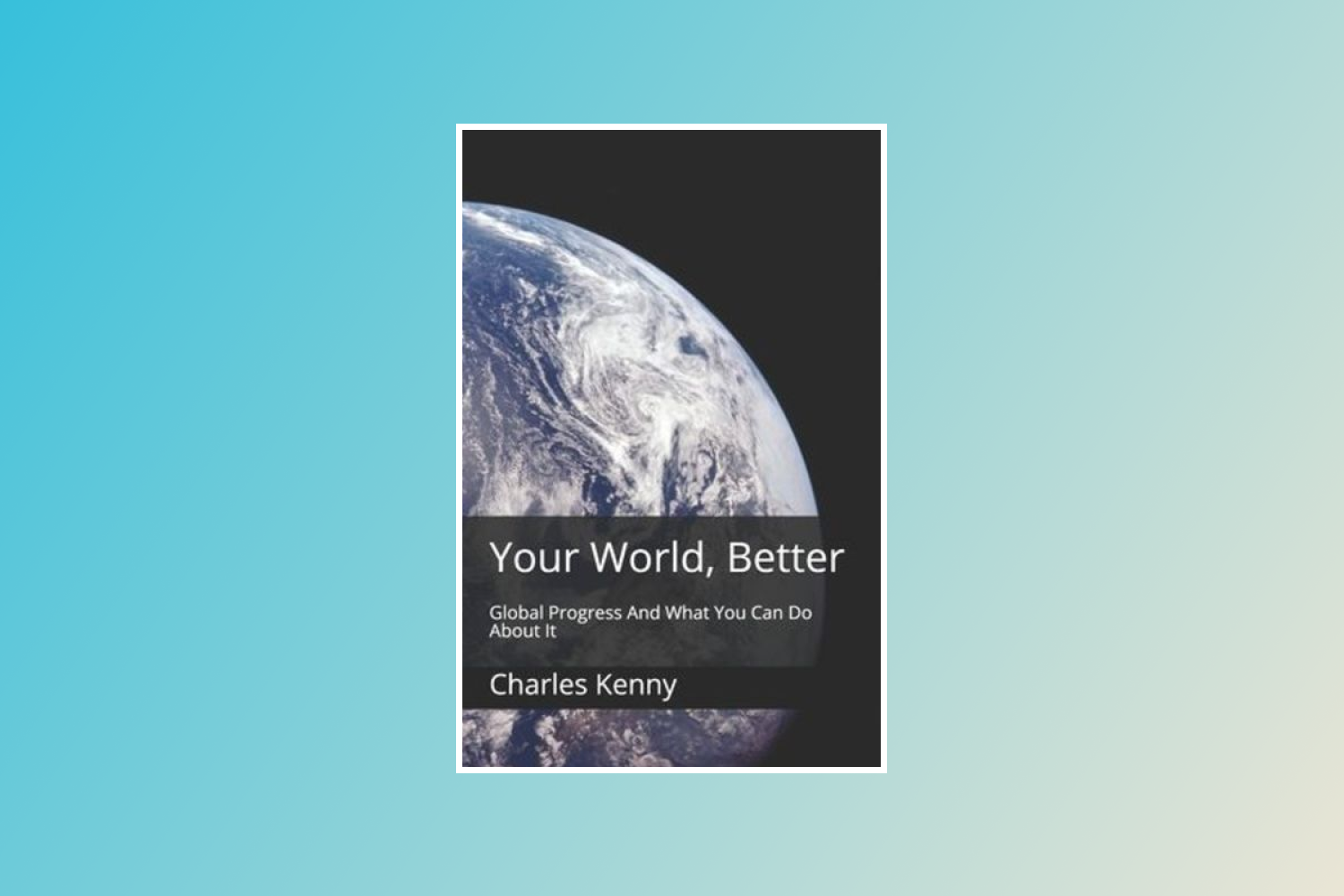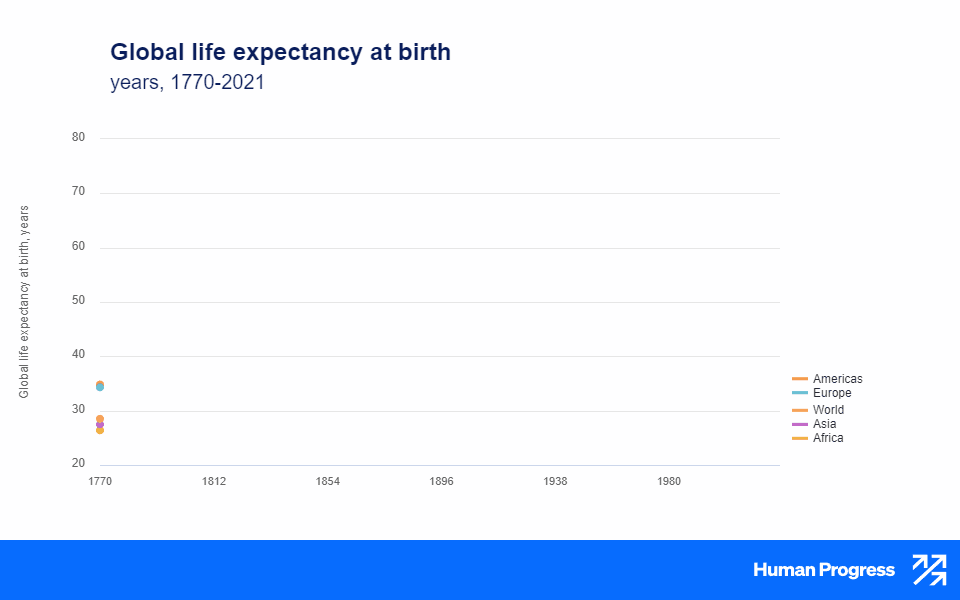Summary: The world has improved dramatically in many aspects, from health and longevity to literacy and freedom. Yet many people are unaware of this progress and are pessimistic about the future. This article presents some evidence of global improvement, the challenges that remain, and the ways that everyone can contribute to making the world better.
Louis XIV (the Fourteenth) reigned over France for 72 years, from 1643 to 1715. Calling himself ‘The Sun King,’ he ruled with absolute authority over the most powerful country in Europe. As symbol of his dominance, he built the immense Palace of Versailles, home to more than 350 people and regular host to 6,000 courtiers. Its famed Hall of Mirrors was lit by 3,000 candles. The gardens had a zoo, 400 sculptures and more than a thousand fountains.
But for all his wealth and power, Louis’ life was filled with tragedy. He and his wife Maria Theresa had six children but only one survived into adulthood. Three kids died as infants, Philippe Charles died at three of a chest infection and Marie Therese at age five from tuberculosis – a bacterial disease that eats away your lungs. Even their longest-lived child, Louis the Grand Dauphin, did not survive long enough to become king after his father, dying of smallpox at the age of fifty. The Sun King’s wife Maria died at 44, from infection. And he himself died at age 77 when his leg was infected with gangrene, which rots flesh.
Beyond good health, King Louis’s family lacked a lot else: their palace may have had a thousand fountains, but it didn’t have a single flush toilet – lucky people went in a bowl that servants would remove, others just squatted in a corner. And while six thousand candles may sound like a lot, they produce about the same amount of illumination as a couple of modern light bulbs. Most of Versailles would have been pitch black as soon as it got dark.
When it comes to quality of life, you may have it better than the family of the Sun King. You definitely have it better when it comes to remaining alive: it is doubtful that any of his family would have died as they did if they’d had access to modern medicine. And this was the wealthiest family in the most sumptuous house in the land – the vast majority of French people at the time lived lives that we would simply find unbearable. The world is just a much better place to inhabit than it was 300 years ago. But it is also a much better place to live in than it was 30 years ago.
One way of looking at that improvement is to think about the chance you’d be reading this book if I’d written it a few hundred years ago. There is a very good probability you would have been too dead to read it. Even if alive, the likelihood you could read anything was small: literacy was a rare skill. Books were incredibly expensive, and most people were very poor, so even if you were in the tiny minority both literate and alive you probably wouldn’t have been able to afford a copy. And in many times and places this book would have been banned –it speaks approvingly of things that were often illegal or at least very dangerous to suggest, from freedom to believe in the god of your choice (or none at all) through gay rights to democracy.
Young (and old) people are getting sick less often, fewer people never learn to read or write, not as many are getting arrested by the police because of what they think and believe, less are getting hit or shot, and a lot less people are being told it’s the law that the color of your skin or your gender makes you a worse person.
It might come as a surprise that the world is getting better. Most people believe poverty is getting worse worldwide and that most other people are miserable. Ask someone your grandparents’ age if things have improved since they were young and they might well say no. Only about one out of every three older people in the United States think life is better today than it was fifty years ago –and these are the people who are old enough to remember fifty years ago. But even after Covid-19, even despite the tragedies of the past few years, I think they are wrong.
Mostly, people remember the good stuff and forget the bad stuff about their past. Adults tend to remember childhood as a time of boundless energy where there was nothing to worry about and a lot of fun to be had. Life as a kid is more complicated than that. But its why older people can say “you don’t know how lucky you are” and “things were better in my day” pretty much straight after each other. They mean “you are lucky to be young but unlucky to be a kid today rather than when I was a kid.” I’d say the truth is closer to the other way around – although there are some really good bits about being young.
Ask someone in their seventies or eighties what they got sick with, and what their friends got sick with. Or ask them about “duck and cover” drills at school, when they practiced for war with Russia
and the atomic bombs that would fall. Or ask them about how African Americans were treated in restaurants, on trains, or in the school system. Or ask someone your parents’ age about where they could watch a show – just one TV in the house, maybe, which had maybe four or five things to watch. Ask them if they wore a seatbelt in the back of the car. Ask them about ‘acid rain.’ Their answers might be reason for them – and you – to think hard about the good old days, and how good they were compared to now.
And even though life in America has got better since your parents or your grandparents were young, life in the rest of the world has got better even faster. We are really fortunate we live in this country, because people in the U.S. are still amongst the healthiest, the most educated, and the richest worldwide. But the rest of the planet is catching up. From Asia to Africa to South America, fewer people are dying young, fewer people don’t learn to read, fewer people urinate or defecate in a field or street rather than in a toilet.
In the past years of pandemic, economic crisis and mass unemployment, the violent death of innocent people and violence aimed at those who protest those deaths, war, hurricanes, corruption and abuse, certainly the world hasn’t gotten better for many of us.
Some people still die young. Many people lose a parent or a grandparent – or more than one—way too early. Families still live lives of hunger and misery. Covid-19 and its impacts demonstrate we can backtrack on health and poverty. People still get locked up, often for things that shouldn’t be a crime. Racism, sexism, and abuse of minorities remains rampant worldwide. Amongst the things that are getting worse, progress towards democracy has reversed in recent years, the coral reefs are bleaching, and the climate is getting hotter.
Perhaps it is not enough to know there’s less bad stuff happening when so much bad stuff is still happening. Certainly, in a world richer and more technologically advanced than ever, it is more shocking than ever that some people remain living in extreme deprivation. But past progress does suggest that there’s nothing inevitable about tragedy or misery. If we work together, the world can continue to improve. No individual human being has solved a global problem by themselves, but billions have been part of solutions. And you can be, too.
This is an excerpt from the book Your World, Better: Global Progress And What You Can Do About It.






